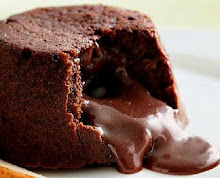- Blanch: Plunging a vegetable into boiling water for 1 or 2 minutes only. Why blanch veggies? It seals in color and nutrients; it partially cooks and yet maintains crunch. It also removes harmful enzymes when canning.
- Bake: Baking is the technique of prolonged cooking of food by dry heat acting by convection, and not by thermal radiation, normally in an oven, but also in hot ashes, or on hot stones.
- Baste: To pour some liquid over a food that is baking/roasting in the oven to prevent it from drying out and to add flavor. Usually accomplished with a spoon, a pastry brush.
- Boil: There is a difference in temperature between simmer and boil. Water boils a sea level at 212 º. At higher altitudes it boils at a much lower temperature. A full rolling boil is indicated when the bubbles in the pan are vigorously distributed and cannot be stirred down.
- Braise: to cook a food on top of aromatic herbs in a small amount of liquid in a covered pot in order to infuse the food with fragrance and flavors while it grows tender.
- Bruise: to crush in order to release flavor as in garlic or fresh herbs.
- Caramelize: to cook with the intention of developing the sugars -- as in sautéed onions or caramelizing sugar for various confections.
- Chop: an onomatopoeic word where the sound of the action is the word. To cut using a French or Chef's knife, allowing the blade to do the work by holding the point down on the cutting board with one hand while rapidly cutting the food in an up and down direction with the other.
- Clarify: to remove inherent solids or impurities through slow heating and cooking as in making ghee from butter, an instance wherein the casein and mineral salts drop to the bottom of the pan, the cream solids bubble up to the top of the pan to be skimmed off and the central layer in the pan is pure butter fat, to be poured into a clean jar and saved for later use. Ghee can be stored at room temperature without going rancid.
- Coddle: to poach or cook slowly in gently simmering liquid; as in coddled pears in a Mirin Ginger sauce.
- Cream: a process of incorporating two or more ingredients until well blended soft and fluffy; as in creaming sugar and butter together in cake baking.
- Cure: to set aside and allow flavors to mingle and develop.
- Dredge: to coat thoroughly; usually with a flour, sugar or other dry ingredients like herbs and spice. One way to accomplish this is to put the dry ingredients in a bag and shake the food to be dredged in the bag.
- Drizzle: to lightly sprinkle, or make a pattern out of a liquid sauce; usually on a food for presentation purposes in addition to introducing another separate flavor.
- Dust: to sprinkle a light coating of a dry ingredient: usually through a strainer; as in dusting a cake with a sprinkle of Confectionary Sugar.
- Flute: to create a decorative edge as in crimping a pie crust.
- Fold: to incorporate two distinctly different densities into a batter without losing the light and fluffy quality of the one while evenly distributing the other; as in distributing fruit in a cake batter, or sugared slivered almonds in whipped cream.
- Kefir: a yogurt based drink, sometimes flavored, found in your grocer's refrigerated section.
- Macerate: to allow to stand in a substance, either a dry ingredient or a liquid one to absorb flavor and develop its own sauce as in sugared berries, or pickle making.
- Marinate: is similar but the difference is to allow to stand in an acid containing sauce to develop flavor and tenderize the food; as in a barbeque sauce.
- Mask: to hide the appearance or flavor by addition of another substance.
- Mince: to chop fine.
- Mirin: a Japanese rice wine sweetener. Eden makes one that is alcohol free.
- Mix: to combine ingredients usually with a wooden spoon.
- Mold: to form into an attractive shape usually with a decorative container; as in an aspic, or Deviled Tofu "Eggs".
- Nituki: to cut on the diagonal and then to cut into "match sticks"; as in carrots or burdock nituki. This exposes a greater cross-section of the cellular structure of the food which allows for quicker cooking, sealing in nutrients and preserving texture.
- Nutritional Yeast: not to be confused with brewers yeast. Nutritional yeast is grown of molasses and is highly palatable and contains a high content of B Complex Vitamins including B12.
- Par Boil: similar to Blanch, however, to par-boil indicates a longer period of time the food is immersed in boiling water usually 5 minutes
- Pare: to shave away the skin of a food.
- Paté: a well seasoned food which has been ground up to a paste. Usually served cold.
- Peel: to remove the skins from a vegetable of fruit.
- Pickle: to immerse in a brine to preserve the food. Pickles stimulate digestion and provide a source of vitamins and nutrients in winter months when fresh foods were not so plentiful in times past.
- Pinch: a trifling amount of a spice or a salt, usually the amount that will fit between the index finger and the thumb.
- Plump: to soak with the intention of restoring moisture and making the dried fruit or vegetable softer.
- Poach: to gently cook in liquid, as in poached pears.
- Proof: to allow a yeasted dough to rest and develop.
- Purée: to mash to a smooth consistency, usually in a food processor or blender.
- Reduce: to boil down to condense the volume and flavor.
- Refresh: to run under cold running water.
- Render: to liquefy a solid fat as in melting butter for Ghee.
- Roux: cooked flour and butter together as a prelude to a gravy or sauce. When using a roux be sure to add heated milk or liquid to it so that the sauce or gravy doesn't lump.
- Sautée: less violent than frying, a sauté is a gently cooking is a lesser amount of oil.
- Scald: to bring milk to a temperature just under boiling, where a skin forms on the surface and there are tiny bubbles beginning to form around the edges.
- Scallop: to bake with a sauce or cream as in scalloped potatoes; and also to flute the edge of a pie crust decoratively.
- Score: to cut shallow cuts in the surface of a food; as in bread or mushrooms.
- Sear: to cook at high temperature to lock in juices.
- Shoyu: a naturally brewed soy sauce without additional alcohol or sugar, similar to Tamari.
- Shred: to cut or grate a food into a fine shaving.
- Sift: to put through a strainer or sifter to remove lumps.
- Simmer: to cook gently at a temperature under a boil.
- Slice: to cut in a directional manner with the knife, while holding the food with the other hand keeping the fingers curled away from the blade.
- Steam: to cook a food holding it over boiling water in a bamboo or metal steamer in a covered pot; utilizing steam while not allowing the food to touch the water.
- Steep: to infuse, or allow to sit in hot water for a period of time; as in tea.
- Stew: to cook over low heat for a length of time in a covered pot which allows flavors to mingle and develop.
- Stir: to circulate a sauce or material in a pan or bowl using a circular motion. When stirring a sauce I prefer to circulate the wooden spoon counter clockwise in small circles in a grand majestic circle to ensure that each portion of the surface is covered. I stir in a counter clockwise motion in the northern hemisphere to create a little balance in the world; were I in Australia I would stir with a clockwise motion.
*A word about safety and also spoons being used for stirring: Please remove the spoon when you are not actually using it and place it on a plate or spoon holder for safe keeping. My Grandmother always said that a spoon protruding from a pot collected bad energy. Here is what I think about that: without the handle protruding from the pot, you will not accidentally knock the spoon out of the sauce pan splashing any surface in the way - you included - nor will you accidentally pull the pot over on yourself. This is critically important if there are children in the house. Additionally, be sure that the handles to all pans are pointed away from the front of the stove for the same reason. - Soba: noodles made from buckwheat flour or a combination of buckwheatwith whole-wheat flour.
- Somen: very thin white or whole-wheat Japanese noodles. Often servedduring the summer.
- Suribachi: a special serrated, glazed clay bowl. Used with a pestle, calleda surikogi, for grinding and pureeing foods.
- Surikogi: a wooden pestle used with a suribachi.
- Sushi: rice rolled with vegetables, fish, or pickles, wrapped in nori, and sliced in rounds.Served with Wasabi and a dipping sauce of Mirin and Tamari.
- Sushi mat: a mat made from bamboo used in making sushi or as a coverfor bowls.
- Tamari: a soy sauce named by George Ohsawa to distinguish traditional, naturally made soy sauce from the commercial, chemically processed variety which is madewith sugar and alcohol. *The original term tamari refers to a thick, condensed liquid that results during the process of making miso, when water comes to the top. This is poured off and called tamari.
- Tekka: a condiment made from hatcho miso, sesame oil, burdock, lotus root, carrot, and ginger root.
- Tempeh: a staple Indonesian soy food crafted from soybeans, water, and a special healthful bacteria, which is allowed to ferment for several hours sotat it forms a high Vitamin B Complex content including a substantial amount of B12 which is essential for vegetarians. Available pre-packed, ready to prepare, in natural food stores, it is crafted in several varieties.
- Tofu: a soybean curd, made from soybeans and nigari, a coagulant taken sea vegetables. See our section on Tofu for a fuller discussion.
- Udon: a tender hand crafted flat noodle.
- Whip: to increase volume and aerate; as in whipped cream.
- Whisk: a wire instrument used to whip a sauce or cream.
- Wok: an oriental pan used for cooking at high temperatures, utilizing little oil.
Glossary
A recipe says 'sauté' and you wonder.. 'uh.. what did she say?'. Below is a list of terms commonly used in recipes.
Subscribe to:
Comments (Atom)





















